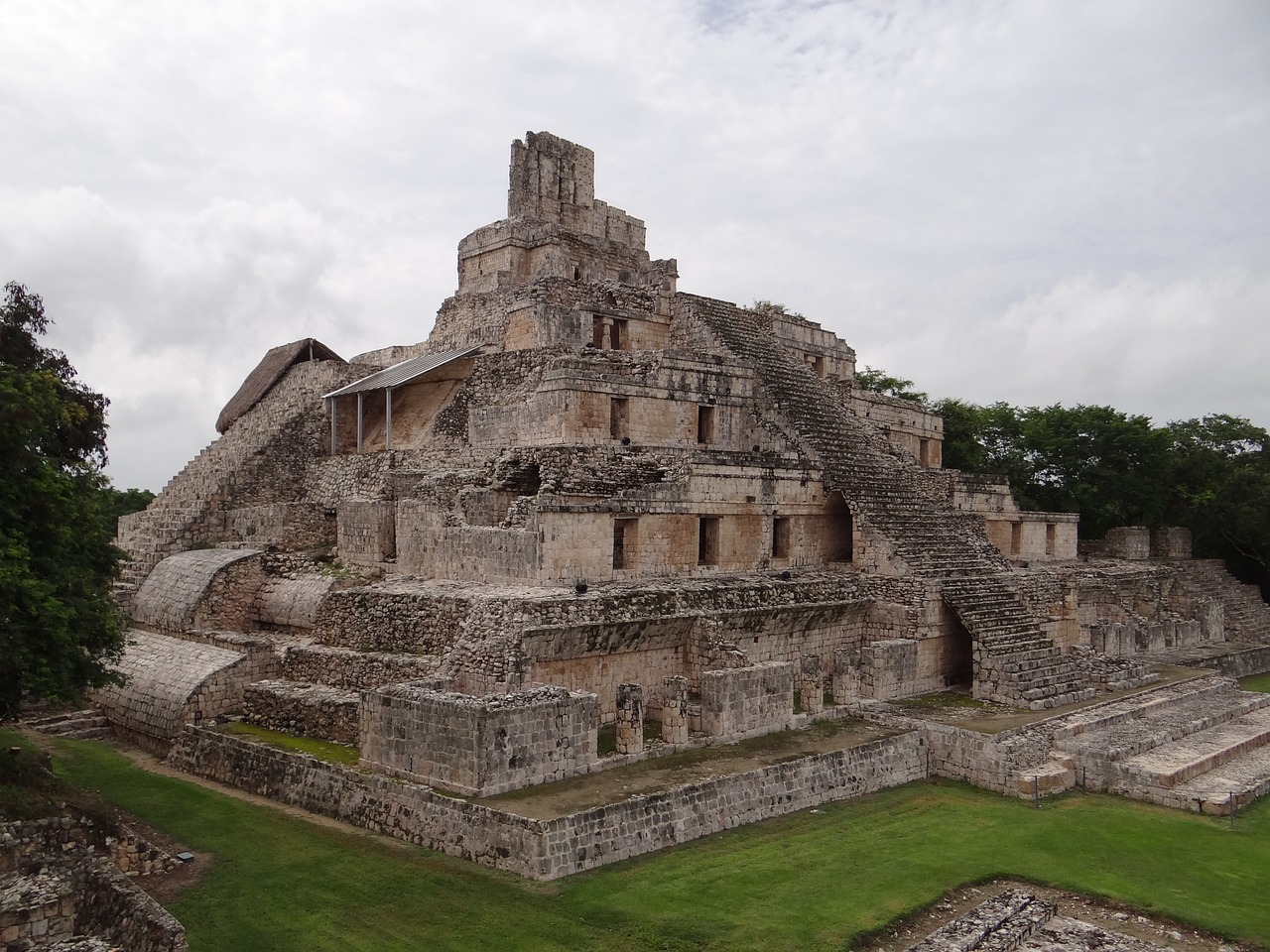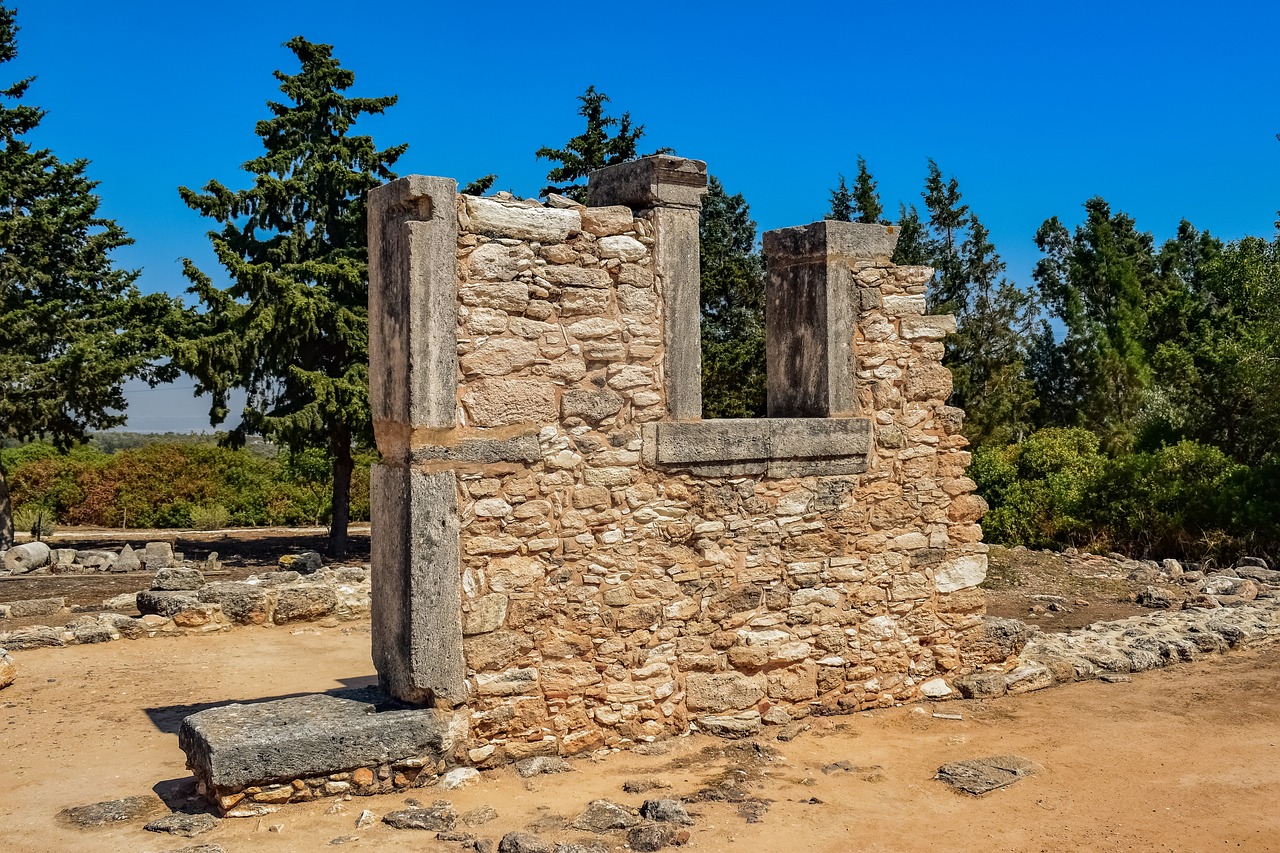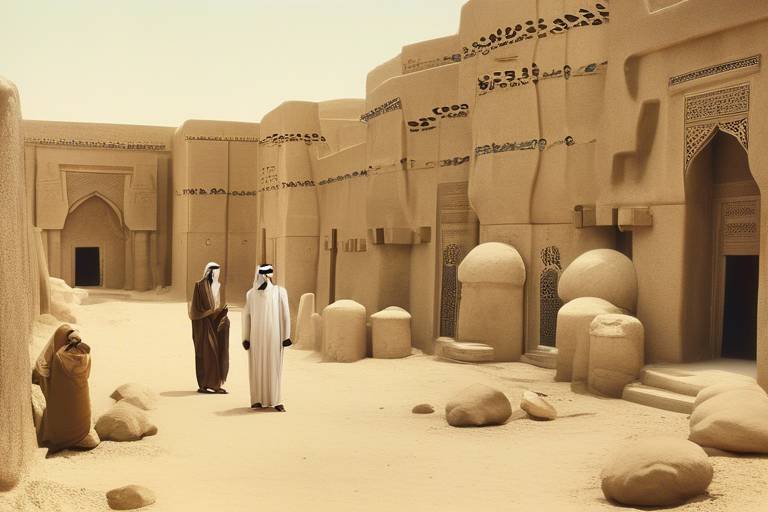The Secrets of the Ancient Civilizations' Scientific Achievements
Ancient civilizations have left behind a legacy of scientific achievements that continue to astound and inspire us to this day. From the towering pyramids of Egypt to the intricate metalwork of the Incas, these ancient societies were pioneers in various fields of science and technology. Let's delve into the mysteries and marvels of their scientific advancements, uncovering the secrets that have stood the test of time.
The Pyramids of Egypt stand as a testament to the ingenuity and advanced knowledge of the ancient Egyptians. These architectural wonders, built with precision and grandeur, showcase the mathematical and engineering prowess of a civilization far ahead of its time. The construction of the pyramids remains a marvel, leaving us in awe of the techniques and tools used to create such monumental structures.
Turning our gaze to the Mayans, we uncover a civilization deeply connected to the cosmos and the stars above. Their intricate understanding of astronomy is evident in their accurate calendar system, sophisticated observatories, and celestial alignments that demonstrated a profound grasp of the universe's workings. The Mayans' astronomical achievements continue to puzzle and intrigue modern scientists.
Traveling to ancient Greece, we explore the roots of modern medicine in the practices of Hippocrates and other medical pioneers. The holistic approach to health, the use of herbal remedies, and the early forms of surgery practiced by the Greeks laid the foundation for contemporary medical science. Their contributions to medicine remain invaluable, shaping the way we understand and treat illnesses today.
The Romans, known for their engineering prowess, left a lasting legacy in the form of aqueducts, roads, and bridges that revolutionized infrastructure development. Their advanced construction techniques and innovative technologies paved the way for modern engineering practices, showcasing a civilization that excelled in both practicality and aesthetics.
Stepping back in time to the Babylonians, we unravel the mathematical mysteries of this ancient civilization. Their sophisticated number system, mathematical tablets, and contributions to geometry and algebra influenced the development of mathematics for centuries to come. The Babylonians' mathematical achievements laid the groundwork for future mathematical discoveries and innovations.
Turning our attention to the Incas, we discover a civilization skilled in the art of metallurgy. Their advanced metalworking techniques and intricate gold and silver artifacts reflect a mastery in working with precious metals that was unparalleled in their time. The metallurgical expertise of the Incas showcases their dedication to craftsmanship and artistic expression.
Voyaging across the Pacific Ocean, we encounter the Polynesians and their exceptional navigational skills. Through the use of celestial navigation, star maps, and knowledge of ocean currents, these seafarers traversed vast distances with precision and skill. The Polynesians' navigation techniques remain a testament to human ingenuity and the drive to explore unknown horizons.
Finally, delving into the philosophical wisdom of ancient Chinese thinkers such as Confucius and Laozi, we uncover profound insights on ethics, governance, and the harmony between humans and nature. The rich philosophical tradition of ancient China continues to influence moral and ethical thought, offering timeless wisdom for navigating the complexities of human existence.

The Pyramids of Egypt
Exploring the remarkable scientific advancements of ancient civilizations and uncovering the mysteries behind their achievements in various fields such as astronomy, mathematics, medicine, and engineering.
Delving into the architectural marvels of the Egyptian pyramids and the advanced mathematical and engineering techniques used by the ancient Egyptians to construct these monumental structures.
The Pyramids of Egypt have captivated the world for centuries with their grandeur and precision. These ancient structures, particularly the Great Pyramid of Giza, stand as a testament to the ingenuity and craftsmanship of the Egyptian civilization. The construction of these massive pyramids involved intricate mathematical calculations and precise engineering methods that continue to puzzle modern experts.
The Egyptians' deep understanding of geometry and astronomy is evident in the alignment of the pyramids with the cardinal points of the compass and the positioning of the structures in relation to celestial bodies. The precision with which the pyramids were built, using advanced techniques such as the lever and ramp systems, showcases the engineering prowess of the ancient Egyptians.
Moreover, the sheer size and scale of the pyramids, along with the intricate internal chambers and passageways, reflect the Egyptians' mastery in architectural design and construction. The mysteries surrounding the construction methods, purpose, and symbolism of the pyramids continue to intrigue archaeologists and historians, sparking endless debates and theories about their true significance.
Overall, the Egyptian pyramids stand as enduring symbols of the ancient civilization's scientific achievements, leaving a legacy of wonder and awe that continues to inspire exploration and discovery.
- Q: What materials were used to build the Egyptian pyramids?
- A: The primary materials used in the construction of the pyramids were limestone blocks, granite, and mortar.
- Q: How were the ancient Egyptians able to transport such massive stones for the pyramids?
- A: The ancient Egyptians likely used a combination of sledges, ramps, and manpower to transport and position the heavy stones.
- Q: What was the purpose of the pyramids in ancient Egyptian society?
- A: The pyramids served as monumental tombs for pharaohs, housing their mummies and treasures for the afterlife.
- Q: How long did it take to build a pyramid?
- A: The construction of a pyramid could take several decades to complete, involving thousands of laborers and skilled craftsmen.

The Astronomy of the Mayans
When delving into the intriguing realm of ancient civilizations, the astronomical knowledge of the Mayans stands out as a beacon of sophistication and precision. The Mayan civilization, flourishing in Mesoamerica, showcased a remarkable understanding of the cosmos through their advanced astronomical practices. One of the most renowned aspects of Mayan astronomy is their precise calendar system, which not only tracked time but also reflected their deep connection to celestial events.
Moreover, the Mayans constructed observatories that served as centers of astronomical study, allowing them to make accurate observations of the movements of celestial bodies. These observatories, built with meticulous precision, were instrumental in predicting astronomical phenomena such as eclipses and planetary alignments. The Mayans' ability to predict such events with remarkable accuracy speaks volumes about their profound knowledge of the stars and planets.
Furthermore, the Mayans' expertise in celestial alignments is evident in the layout of their cities and sacred sites. Many Mayan structures were strategically positioned to align with specific astronomical events, such as the solstices and equinoxes. These alignments not only served practical purposes but also held deep symbolic and spiritual significance for the Mayan people, highlighting the interconnectedness of their culture with the celestial realm.
Additionally, the Mayans' use of star maps and intricate astronomical calculations further demonstrates their advanced understanding of the night sky. By mapping out the movements of stars and planets, the Mayans were able to navigate both the physical and spiritual realms with precision and purpose. Their celestial knowledge not only guided their agricultural practices and religious ceremonies but also shaped their worldview and societal structure.
In conclusion, the astronomy of the Mayans stands as a testament to the ingenuity and intellectual prowess of this ancient civilization. Through their sophisticated calendar system, observatories, celestial alignments, and star maps, the Mayans revealed a deep reverence for the cosmos and a profound understanding of the interconnectedness between the earthly and celestial realms.

The Medicine of Ancient Greece
Ancient Greece, known for its rich history and contributions to various fields, holds a significant place in the realm of medicine. The medical practices of ancient Greece were revolutionary in shaping the foundation of modern healthcare. One of the most prominent figures in ancient Greek medicine was Hippocrates, often referred to as the "Father of Medicine." His teachings and ethical standards laid the groundwork for the practice of medicine as we know it today.
The ancient Greeks believed in a holistic approach to healthcare, focusing on the balance between the body, mind, and spirit. They utilized a combination of herbal remedies, surgical procedures, and dietary regulations to treat various ailments. Physicians in ancient Greece were highly respected and held to a code of ethics that prioritized the well-being of their patients.
Furthermore, the ancient Greeks made significant advancements in anatomy and physiology through the dissection of animals and observations of the human body. This knowledge paved the way for a deeper understanding of the inner workings of the human body and the development of medical treatments.
A key aspect of ancient Greek medicine was the concept of the four humors, which posited that an imbalance of bodily fluids—blood, phlegm, black bile, and yellow bile—led to illness. Physicians sought to restore harmony by rebalancing these humors through various treatments and therapies.
Apart from medical treatments, ancient Greek physicians also emphasized the importance of preventive medicine and public health. They recognized the significance of cleanliness, proper nutrition, and regular exercise in maintaining overall well-being and preventing diseases.
In conclusion, the medicine of ancient Greece not only laid the groundwork for modern medical practices but also highlighted the importance of a holistic approach to healthcare. The legacy of ancient Greek medicine continues to influence the field of medicine today, reminding us of the enduring impact of the past on the present.

The Technology of the Romans
The Romans were renowned for their technological prowess, which played a pivotal role in shaping their vast empire. One of the most iconic technological achievements of the Romans was the construction of aqueducts, which revolutionized urban water supply systems. These impressive structures, built with meticulous engineering precision, transported water over long distances to supply cities with clean water for public baths, fountains, and private residences.
In addition to aqueducts, the Romans were masters of road construction, creating a vast network of well-built roads that connected their far-reaching territories. These roads were crucial for efficient military movements, trade routes, and communication across the empire. The famous Roman roads, such as the Appian Way, exemplified their advanced engineering skills and strategic planning.
Furthermore, the Romans excelled in the construction of bridges, showcasing their innovative architectural techniques. Roman engineers designed sturdy and durable bridges using a combination of stone, concrete, and arches, allowing for the safe passage of troops, vehicles, and goods over rivers and valleys. The engineering marvel of Roman bridges like the Pont du Gard in France continues to inspire awe and admiration for their ingenuity.
Another notable technological achievement of the Romans was their advanced construction techniques, particularly in the realm of architecture. Roman architects and builders utilized techniques such as the use of concrete, arches, and domes to create enduring structures like the Colosseum and the Pantheon. These monumental buildings stand as testaments to Roman engineering expertise and architectural innovation.
Moreover, the Romans made significant contributions to military technology, developing sophisticated siege engines, fortifications, and weaponry that were instrumental in their military conquests. Innovations like the ballista, a powerful projectile launcher, and the construction of fortified walls and camps demonstrated the Romans' strategic military engineering capabilities.
In conclusion, the technology of the Romans was characterized by a remarkable blend of innovation, engineering excellence, and practicality. Their advancements in aqueducts, roads, bridges, architecture, and military technology not only facilitated the expansion of their empire but also left a lasting legacy of technological ingenuity that continues to inspire admiration to this day.

The Mathematics of the Babylonians
The Babylonians were pioneers in the field of mathematics, laying the groundwork for many mathematical concepts still used today. Their sophisticated number system, based on the number 60, formed the basis of our modern system of time and angles. Imagine a world where numbers were counted in sets of 60, leading to the division of hours into 60 minutes and circles into 360 degrees. This numerical system was not only practical but also remarkably advanced for its time.
One of the most notable contributions of the Babylonians to mathematics was the development of mathematical tablets, which contained a wealth of geometric and algebraic problems. These tablets served as instructional tools for students and demonstrated the Babylonians' deep understanding of mathematical principles. They tackled complex problems involving quadratic equations, cubic equations, and even the calculation of square roots with remarkable accuracy.
Furthermore, the Babylonians made significant advancements in geometry, particularly in the calculation of areas and volumes. Their mathematical prowess extended to practical applications in surveying land, constructing buildings, and managing agricultural fields. By mastering the principles of geometry, the Babylonians were able to create precise measurements and geometric shapes essential for various engineering projects.
It is fascinating to see how the mathematical achievements of the Babylonians influenced later civilizations, including the Greeks and Romans. The concepts and techniques developed by the Babylonians laid the foundation for the mathematical advancements that followed, shaping the course of mathematics for centuries to come. Their legacy continues to inspire mathematicians and scholars to this day, highlighting the enduring impact of ancient Babylonian mathematics.

The Metallurgy of the Incas
The metallurgy of the Incas stands as a testament to their remarkable craftsmanship and skill in working with metals. The Inca civilization, known for their mastery of metallurgy, excelled in creating intricate gold and silver artifacts that showcased their expertise in metalworking. Utilizing advanced techniques, the Incas were able to produce fine jewelry, ceremonial objects, and tools with intricate designs that reflected their rich cultural heritage.
One of the most fascinating aspects of Inca metallurgy was their ability to alloy different metals to create durable and aesthetically pleasing objects. By combining gold with silver and copper, the Incas were able to produce alloys of varying colors and properties, allowing them to craft objects of great beauty and utility. Their skill in working with precious metals was unparalleled in the ancient world, and their creations continue to captivate and inspire admiration to this day.
Furthermore, the Inca civilization's metallurgical techniques were highly advanced for their time, with the use of sophisticated tools such as hammers, anvils, and molds enabling them to shape metals with precision. The Inca artisans demonstrated a deep understanding of metallurgy, employing techniques such as casting, soldering, and embossing to create intricate designs and patterns on their metalwork.
Moreover, the Inca metallurgists were adept at mining and extracting metals from the earth, utilizing their knowledge of geology and mineralogy to locate and extract gold, silver, and copper ores. They developed efficient mining techniques and smelting processes to extract pure metals from ores, allowing them to produce high-quality metal objects that were highly prized for their craftsmanship and beauty.
In conclusion, the metallurgy of the Incas represents a pinnacle of artistic and technical achievement in the realm of metalworking. Their mastery of metallurgical techniques, combined with their artistic vision and cultural significance, has left a lasting legacy that continues to intrigue and inspire admiration for the ingenuity and skill of the Inca civilization.

The Navigation of the Polynesians
The Polynesians were master navigators who possessed exceptional skills in traversing the vast Pacific Ocean. Their ability to navigate the open seas without the aid of modern technology was truly remarkable. Using only the stars, ocean currents, and natural signs, the Polynesians were able to sail long distances and discover new islands in the Pacific.
Central to Polynesian navigation was their deep understanding of celestial bodies. By studying the stars, the Polynesians developed intricate star maps that guided them during their voyages. These star maps were passed down through generations, allowing Polynesian seafarers to navigate with precision and accuracy.
In addition to celestial navigation, the Polynesians also relied on their knowledge of ocean currents. They observed the subtle changes in water movements and used this information to plot their course. By understanding the behavior of the ocean, the Polynesians were able to navigate efficiently and safely across vast distances.
Furthermore, the Polynesians had a profound respect for nature and its signs. They closely observed the behavior of birds, clouds, and marine life, using these natural cues to guide their navigation. This harmonious relationship with the environment not only aided their voyages but also reflected their deep connection to the natural world.
Overall, the navigation skills of the Polynesians were a testament to their ingenuity and resourcefulness. Through their mastery of celestial navigation, knowledge of ocean currents, and keen observation of nature, the Polynesians were able to explore and settle the remote islands of the Pacific, leaving a lasting legacy of seafaring expertise.

The Philosophy of the Ancient Chinese
Delving into the philosophical traditions of ancient China unveils a rich tapestry of wisdom that continues to resonate through the corridors of time. The profound insights of revered thinkers such as Confucius, Laozi, and Zhuangzi have left an indelible mark on the philosophical landscape, shaping the ethical, moral, and metaphysical discourse of generations.
Confucius, known for his teachings on ethics and governance, emphasized the importance of social harmony, filial piety, and the cultivation of personal virtues. His philosophy centered around the concept of the "Junzi," or the noble person, who embodies benevolence, righteousness, and propriety in all actions.
Laozi, the legendary figure behind the Tao Te Ching, delved into the mystical realms of Taoism, advocating for a naturalistic approach to life in harmony with the Tao, or the Way. His teachings on simplicity, spontaneity, and non-action underscored the importance of aligning with the natural flow of the universe.
Zhuangzi, a Daoist philosopher, expounded upon the concept of relativism and the fluidity of existence. Through his parables and anecdotes, Zhuangzi challenged conventional notions of reality, urging individuals to embrace change, impermanence, and the interconnectedness of all things.
The ancient Chinese philosophers grappled with existential questions, pondered the nature of reality, and sought to unravel the mysteries of the human experience. Their enduring legacy continues to inspire seekers of wisdom and truth, inviting contemplation on the timeless principles of balance, harmony, and virtue.
Frequently Asked Questions
- What were some of the key scientific achievements of ancient civilizations?
Ancient civilizations made significant advancements in various fields such as astronomy, mathematics, medicine, engineering, metallurgy, and navigation. These achievements laid the foundation for many modern technologies and knowledge systems.
- How did ancient Egyptians build the pyramids?
The ancient Egyptians used advanced mathematical and engineering techniques to construct the pyramids. They employed precise measurements, sophisticated tools, and innovative building methods to create these monumental structures that continue to intrigue and inspire people today.
- What made the Mayan calendar system so accurate?
The Mayans had a deep understanding of astronomy and celestial movements, which allowed them to develop a highly accurate calendar system. By studying the stars, planets, and celestial events, the Mayans created a calendar that reflected their advanced knowledge of the cosmos.
- How did ancient Greeks contribute to modern medicine?
Ancient Greeks, particularly figures like Hippocrates, made significant contributions to medicine. They introduced concepts of diagnosis, treatment, and patient care that form the basis of modern medical practices. The use of herbal remedies, surgeries, and holistic approaches also originated from ancient Greek medical traditions.
- What were some of the innovative technologies developed by the Romans?
The Romans were known for their advanced engineering feats, including the construction of aqueducts, roads, bridges, and architectural marvels. Their innovative technologies revolutionized infrastructure development and laid the groundwork for many modern construction practices.
- How did the Babylonians influence mathematics?
The ancient Babylonians made significant contributions to mathematics, including the development of a sophisticated number system, mathematical tablets, and advancements in geometry and algebra. Their mathematical achievements influenced later civilizations and shaped the way we understand and use numbers today.
- What set the Polynesian navigators apart in their seafaring abilities?
The Polynesian seafarers were renowned for their exceptional navigational skills, which allowed them to traverse vast distances across the Pacific Ocean. Their use of celestial navigation, star maps, and knowledge of ocean currents enabled them to undertake long and successful voyages with remarkable precision.
- What were some key philosophical insights of ancient Chinese thinkers?
Ancient Chinese philosophers such as Confucius, Laozi, and Zhuangzi offered profound insights on ethics, governance, metaphysics, and the interconnectedness of humans and nature. Their teachings continue to influence philosophical thought and ethical principles to this day.



















